Home | Major Sporting Events | Paralympic Games
1976 Paralympic Games - Toronto
PreviousNext
Extending elite international competition to athletes with disabilities, the name of the Paralympic Games denotes a competitive equality "parallel" to the Olympic Games. However, the International Olympic Committee did not formally adopt the name "Paralympics" until 1984." The fifth Paralympic Games, held in Toronto immediately following the 1976 Olympic Games in Montreal, were known as the Toronto Olympiad for the Physically Disabled.
Dr. Robert Jackson, a pioneer dedicated to building support for athletes with disability in Canada, spearheaded the organization of the Toronto Olympiad. Working as a medical volunteer in Tokyo with the Canadian Olympic Team in 1964, Jackson attended the second Paralympic Games and was disappointed to learn Canada had not yet participated in the event. Determined to expand and develop the Paralympic movement at home, in 1967 he founded the Wheelchair Sports Association of Canada, and helped organize Canada's first appearance at the third Paralympic Games in 1968.
Echoing issues that had confronted Olympic promoters in Montreal, international politics created controversy at the 1976 Paralympic Games. Organizers permitted a racially integrated South African team to compete in Toronto, arguing the inclusive international competition for disabled athletes outweighed global condemnation of apartheid politics. Several nations responded with boycotts, and the federal government withdrew funding, leaving organizers reliant upon donations and ticket sales. Fortunately, the high quality of athletic competition engaged and excited crowds in Toronto. Attendance surpassed early expectations, and many spectators paid more than required admission to show their support for the event.
Nearly 1,400 athletes from 40 countries competed in the 1976 Toronto Olympiad, including athletes with visual impairments and amputation participating for the first time in official Paralympic medal events. Canada made a strong showing as a host nation, winning 25 gold medals. Arnie Boldt, an 18 year-old amputee high jumper, was named "Outstanding Performer of the Games." Hailing from Saskatchewan, Boldt had lost his leg in a farm accident at the age of three. Preferring not to wear an artificial leg, he relied instead on his natural athletic ability. First taking up athletics in elementary school, he resourcefully innovated adaptive running and jumping techniques and achieved extraordinary results, often competing against able-bodied track athletes.
Combining determination with creative dexterity, Arnie Boldt won gold medals in the high jump and long jump competitions at the Toronto Olympiad. He set the record at that time for amputee high jumping at 1.86 metres, and was featured in a front-page story in the Globe and Mail the following day. Sharing these stories with a national audience, the 1976 Paralympic Games galvanized popular support for disabled athletes in Canada. Following the Toronto Olympiad, the Canadian government increased funding for disabled athletes aspiring to compete at the Paralympic level. Demonstrating the high caliber of competition Canadians could expect on the Paralympic stage, the event challenged and enriched national perceptions of what human beings could achieve through sport.
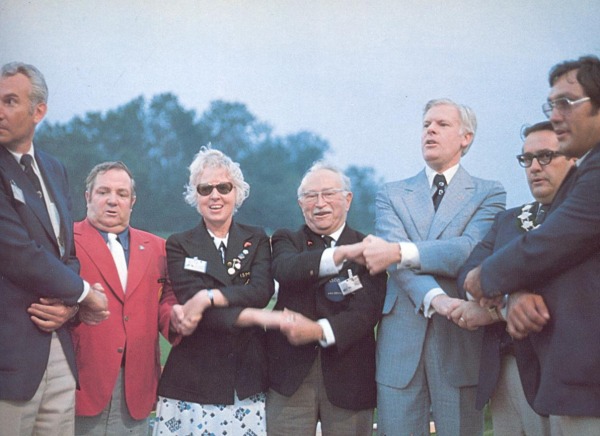
Sir Ludwig Guttman, founder of the Stoke Mandeville Games in England which were the precursor to the Paralympic Games, attended the 1976 Toronto Paralympic Games. Shown in the centre of the photograph with the Games executives, he was an inspiration to athletes for all of his life. Sir Guttman was one of the founders of the Paralympic movement.
Collection: Canadian Paralympic Committee

The medals for the 1976 Paralympic Games featured a motif of six petals coming together crowned with the words "Everyone Wins" and encircled by 1976 Toronto Olympiad in braille. The reverse had the official name of the event. The medals were presented by members of the Girl Guides of Canada.
Collection: Canadian Paralympic Committee
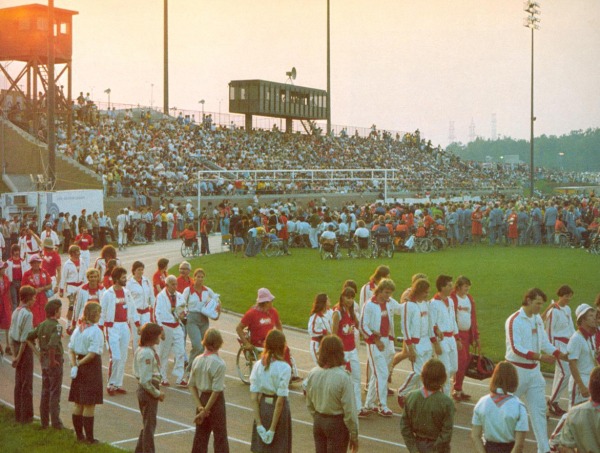
The parade of athletes was held at the Woodbine Race Track in Toronto and attracted 24,000 spectators. Starting in 1960 the Paralympics were usually held in the same country hosting the Olympic Games. Specialized racing wheelchairs were used for the first time at these Games.
Collection: Canadian Paralympic Committee
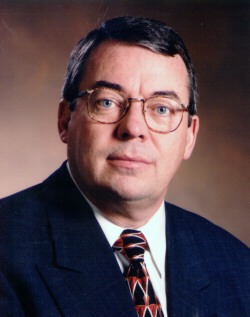
Recognizing the need for a single, central organization for disabled sport, Dr. Robert Steadward was instrumental in developing a proposal for a new structure on disabled sport designed on a sport structure rather than a medical or rehabilitation structure with democratic national representation. Under his direction the International Paralympic Committee (IPC) was formed in 1989.
Collection: Canada's Sports Hall of Fame
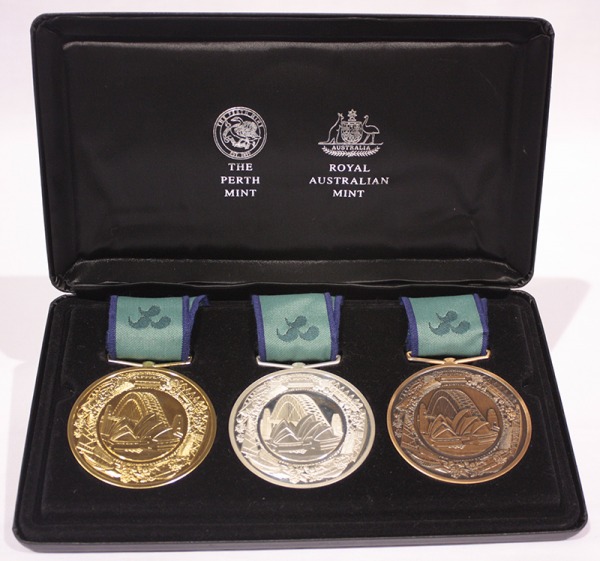
The medals for the 2000 Paralympic Games in Sydney featured the iconic Sydney Harbour and the Sydney Opera House. For the athletes the Games in Sydney were special. Not only were they the best attended by fans who regarded the athletes as true sportsmen and women but they were the Games that Paralympians regarded that they became an integral part of the Olympic movement.
Collection: Private Collection: Dr. Robert Steadward

The medals for the 1998 Paralympic Winter Games in Nagano featured a stylized rabbit on skates on the front, with braille on the reverse side. The first Winter Paralympic Games were held in 1976 and by 1998 they had grown in the number of sports and doubled the number of athletes competing.
Collection: Private Collection: Dr. Robert Steadward
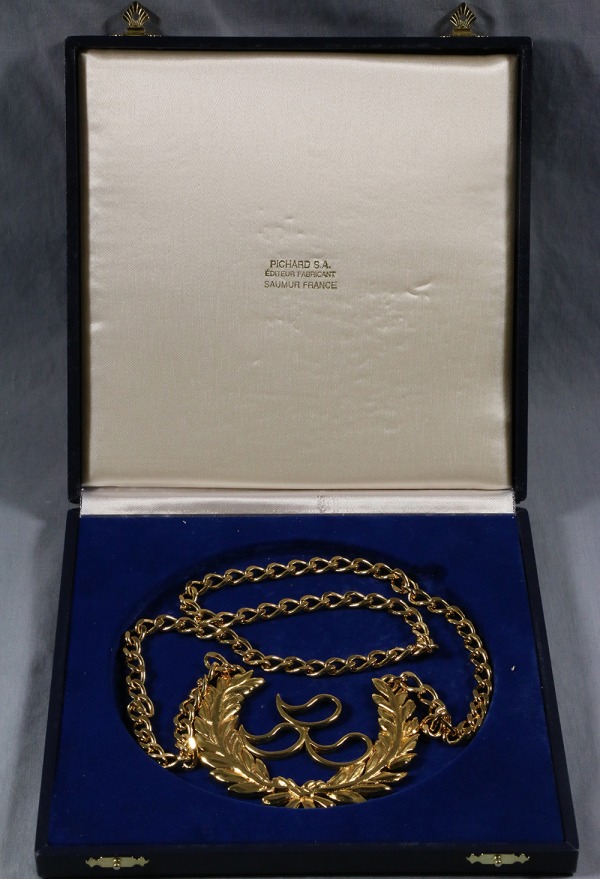
Dr. Steadward served as the founding and first President of the IPC from 1989 to 2001. During his tenure the organization expanded from 37 to 172 nations. Today, due in great part to his unceasing efforts, the Paralympic Games are recognized and respected as one of the largest sporting events worldwide. The IPC award is given for distinguished contribution to the Paralympic movement in 2001.
Collection: Private Collection: Dr. Robert Steadward

This basketball is signed by members of both the men's and women's wheelchair basketball teams, both of whom won the Gold medal at the 2000 Paralympic Summer Games in Sydney. Included in the signatures is Chantal Benoit, one of Canada's premier players. Dr. Steadward started his career in Paralympic sport as a volunteer coach in wheelchair basketball for the Edmonton Handicaddies.
Collection: Canada's Sports Hall of Fame
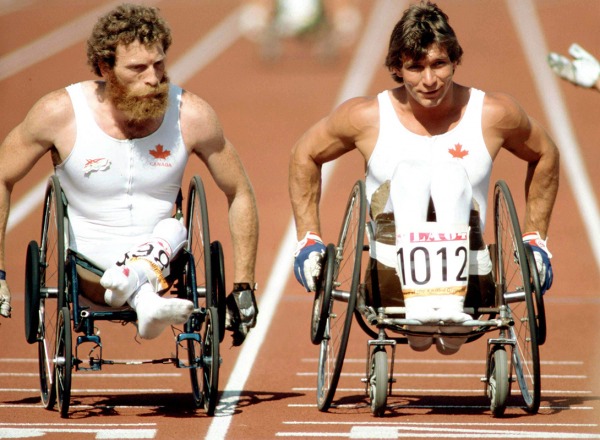
Rick Hansen competed in the 1500m wheelchair race held at the 1984 Olympic Games in Los Angeles, the first time an event of this kind was held at an Olympic Games. Fighting back from an injury he qualified in eighth position. "In the eyes of the world that's eighth position. But for me, it was one of the greatest athletic achievements in my life".
Collection: CP PHOTO/COC/J. Merrithew

Rick Hansen suffered a spinal cord injury which changed the course of his life. He went on to win gold, silver and bronze medals at the 1980 and 1984 Paralympic Games. His "Man in Motion" tour of the world raised awareness and money for spinal cord injuries. He believes "Sport is a vehicle to contribute to society".
Collection: Canada's Sports Hall of Fame

Arnold Boldt was honoured with being the first torchbearer for the 2010 Paralympic Games Relay. In this photograph he is holding the torch in the House of Commons. In 2012 he was appointed to the Officer of the Order of Canada for his achievement in sport and his contributions as a role model for people with disabilities.
Collection: THE CANADIAN PRESS/Fred Chartrand
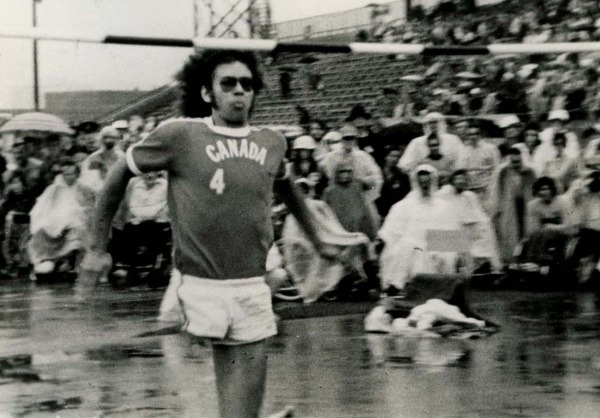
Arnold Boldt competed in the first of six Paralympic Games in Toronto in 1976. He had five consecutive gold medals between 1976 and 1992 in the high jump event and set a world record of 1.96 m (6' 5") in 1980. His accomplishments drew attention to the Paralympic Games not only in Canada but internationally.
Collection: Canada's Sports Hall of Fame

Arnold Boldt won his second gold medal at the 1976 Paralympic Games in the long jump event. His commitment to the Paralympics in Canada was recognized when he, along with seven other athletes and sport advocates, carried in the Americas Paralympic Committee flag at the opening ceremonies for the 2012 Parapan Games in Toronto.
Collection: Canada's Sports Hall of Fame

Twenty years after his retirement from athletic competition Arnold Boldt competed at the 2010 Paralympic Games in London in cycling. At age 55 he was the oldest cyclist on the team. Over his career he has seen the growth of the Paralympic Game and has stated that much of their success on the evolution of equipment and athlete preparation.
Collection: Canadian Paralympic Committee/Phillip MacCallum
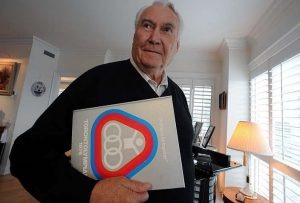
Dr. Robert Jackson was a pioneer in the field of medicine. He brought the procedure of arthroscopy to Canada and taught it to other surgeons. For adapting this process to the field of sport medicine Sports Illustrated named him as one of the top 40 individuals to have changed the field of play. Dr. Jackson helped to establish the Paralympic Games in Canada through his active involvement in sport for disabled athletes.
Collection: Canadian Paralympic Committee
Previous Next


